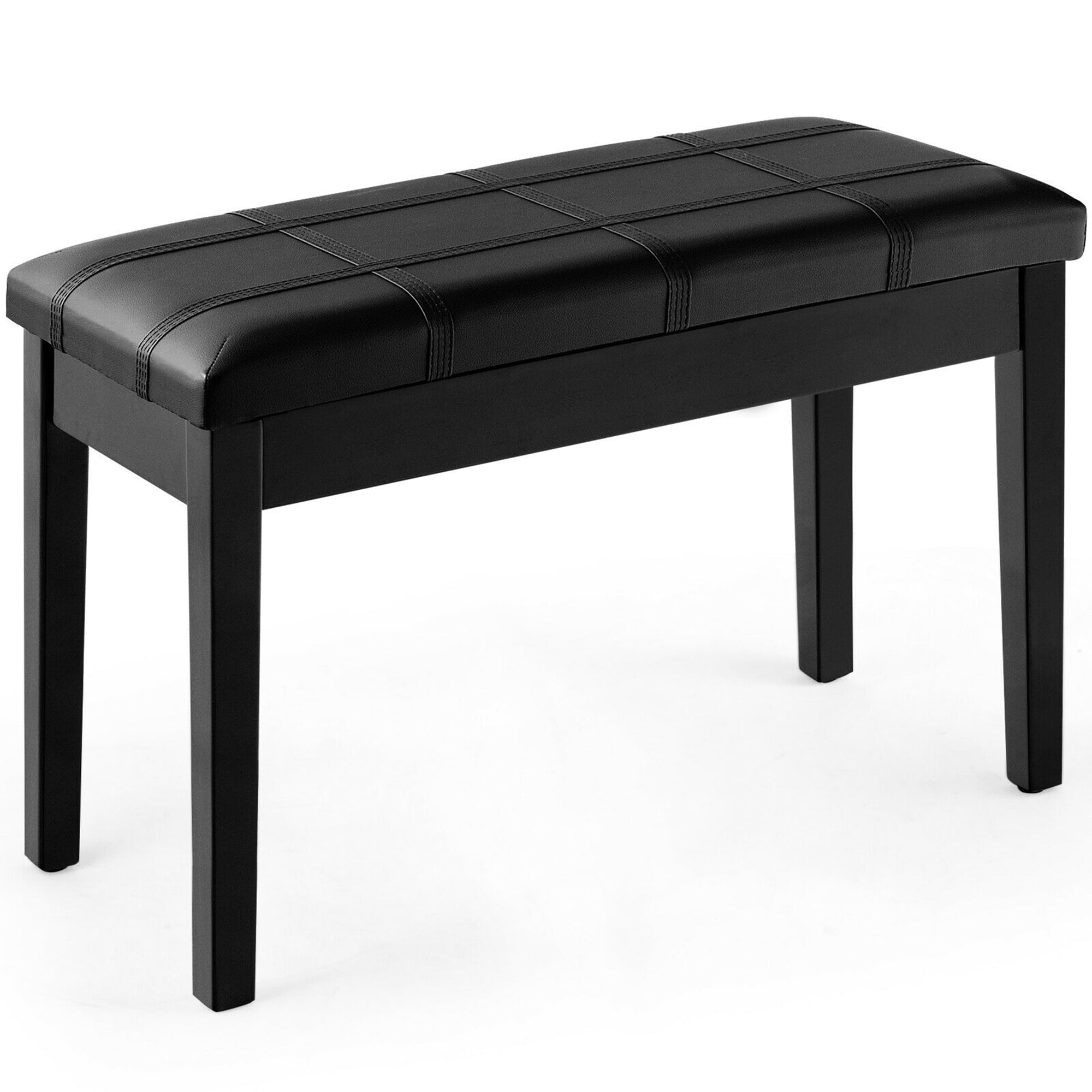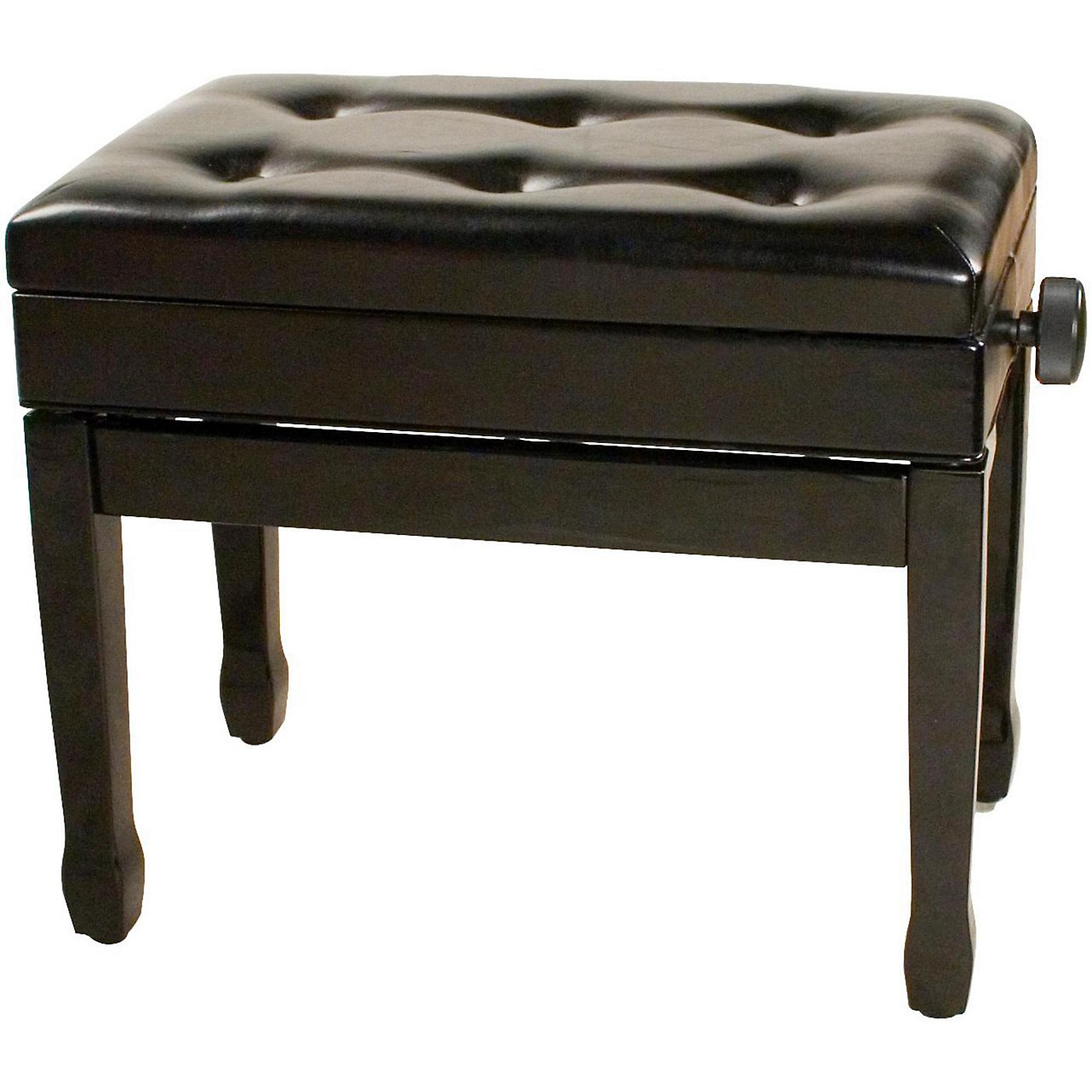Understanding the Need for a Padded Back: Piano Chair With Padded Back

Playing the piano for extended periods can take a toll on your body, especially your back. A padded back on a piano chair provides crucial support, ensuring a comfortable and injury-free playing experience.
Benefits of a Padded Back
A padded back offers numerous advantages for pianists, contributing to a more enjoyable and productive practice session.
- Comfort: The padded back provides a soft and supportive surface, reducing pressure on the spine and preventing discomfort during long practice sessions. This comfort allows pianists to focus on their music without distractions from physical discomfort.
- Posture: A padded back encourages proper posture by providing support for the upper back and shoulders. This promotes a more balanced and aligned posture, reducing strain on the back, neck, and shoulders.
- Injury Prevention: Maintaining good posture while playing is essential for injury prevention. A padded back helps to prevent back pain, neck strain, and other musculoskeletal problems that can arise from poor posture.
Comparison with Traditional Piano Stools
Traditional piano stools lack the back support that a padded back provides. While they may be suitable for short practice sessions, they can lead to discomfort and fatigue over longer periods.
- Posture: Traditional stools often encourage slouching, which can strain the back and neck. A padded back, on the other hand, provides support and encourages a more upright posture, reducing strain on the spine.
- Comfort: The lack of back support on traditional stools can lead to discomfort and fatigue, especially during long practice sessions. A padded back provides cushioning and support, making it a more comfortable option for pianists.
Importance of Proper Posture
Proper posture is crucial for pianists, as it allows for efficient movement, reduces strain on the body, and promotes better control over the instrument.
- Efficient Movement: Proper posture allows for a greater range of motion and control, enabling pianists to play with more precision and ease.
- Reduced Strain: Maintaining a balanced posture reduces strain on the back, neck, and shoulders, preventing injuries and discomfort.
- Improved Control: Good posture allows for better control over the instrument, enabling pianists to play with greater accuracy and expression.
Features of Different Types of Piano Chairs with Padded Backs
Piano chairs with padded backs come in various styles, each offering unique features to suit different needs.
| Feature | Adjustable Height | Back Support Options | Materials |
|---|---|---|---|
| Basic Padded Back Chair | Yes | Fixed back with padding | Wood frame, foam padding, fabric upholstery |
| Adjustable Backrest Chair | Yes | Adjustable backrest with multiple positions | Metal frame, foam padding, leather upholstery |
| Ergonomic Piano Chair | Yes | Contoured backrest with lumbar support | Plastic frame, high-density foam padding, breathable fabric upholstery |
Choosing the Right Piano Chair

Choosing the right piano chair is crucial for comfort, posture, and ultimately, your playing experience. A well-fitting piano chair can enhance your technique, reduce fatigue, and make practicing a more enjoyable experience.
Factors to Consider When Choosing a Piano Chair
When selecting a piano chair with a padded back, several factors come into play. These include your playing style, height, and personal preferences.
- Playing Style: Different playing styles require different seating positions. Classical pianists often prefer a higher chair to maintain an upright posture, while jazz pianists might prefer a lower chair for greater freedom of movement.
- Height: The height of the chair should allow you to sit comfortably at the piano with your elbows at a 90-degree angle and your wrists level with the keys.
- Personal Preferences: Some pianists prefer a chair with a high back for added support, while others prefer a lower back for greater mobility. Consider your own comfort level and what feels most natural for you.
The Importance of Proper Fit and Adjustability
A properly fitted piano chair is essential for maintaining good posture and avoiding strain. An adjustable piano chair allows you to customize the height and back support to suit your individual needs.
- Height Adjustability: Allows you to find the perfect height for your playing style and body type. This is crucial for maintaining proper posture and preventing fatigue.
- Backrest Adjustability: A backrest that can be adjusted in terms of height and angle can provide customized support for your back, promoting good posture and reducing strain.
- Seat Adjustability: The ability to adjust the seat depth and width can also enhance comfort and support.
Features to Look for in a Piano Chair with a Padded Back
When purchasing a piano chair with a padded back, consider the following features:
- Padding: The padding should be comfortable and supportive, providing adequate cushioning for your back and seat. Look for high-density foam that provides long-lasting comfort.
- Backrest Design: The backrest should be ergonomically designed to provide proper support for your back. Consider the height, angle, and shape of the backrest.
- Seat Design: The seat should be wide and deep enough to provide adequate support for your hips and thighs. A slightly curved seat can help to improve posture.
- Durability: The chair should be sturdy and durable enough to withstand years of use. Look for a chair with a strong frame and high-quality materials.
- Stability: The chair should be stable and not wobble or rock when you sit on it. Look for a chair with a wide base and a sturdy construction.
How to Measure for a Piano Chair with a Padded Back, Piano chair with padded back
Measuring for a piano chair with a padded back is simple and ensures a perfect fit. Here’s a step-by-step guide:
- Measure your height: Stand straight and measure your height from the floor to the top of your head.
- Measure your sitting height: Sit comfortably on a chair with your feet flat on the floor. Measure the distance from the floor to the top of your thighs.
- Measure your arm length: Sit comfortably with your elbows at a 90-degree angle and your wrists level with the keys. Measure the distance from the floor to your elbows.
- Use the measurements to determine the appropriate chair height: Your sitting height plus the height of your keyboard will give you the ideal chair height. However, you can adjust the height slightly based on your personal preferences.
Piano chair with padded back – A piano chair with a padded back offers a comforting haven for the weary musician, a place to rest and recharge between the notes. But sometimes, the journey to comfort involves a bit of assembly. If you’re seeking a more profound level of support, consider the magic back chair assembly instructions to unlock a deeper connection with your chair.
Once assembled, your piano chair will become a sanctuary for both your body and your soul, allowing you to fully embrace the transformative power of music.
The simple piano chair with its padded back, designed for comfort and focus, evokes a sense of quiet contemplation. It’s a reminder that the most profound moments of creativity often occur in stillness. In a similar vein, the avignon tufted back chair , with its elegant upholstery and intricate detailing, invites a sense of grace and refinement.
Both chairs, in their own way, embody the idea that comfort and beauty can inspire both artistic expression and inner peace. And just as the piano chair supports the musician, so too does the Avignon chair provide a space for reflection and connection.